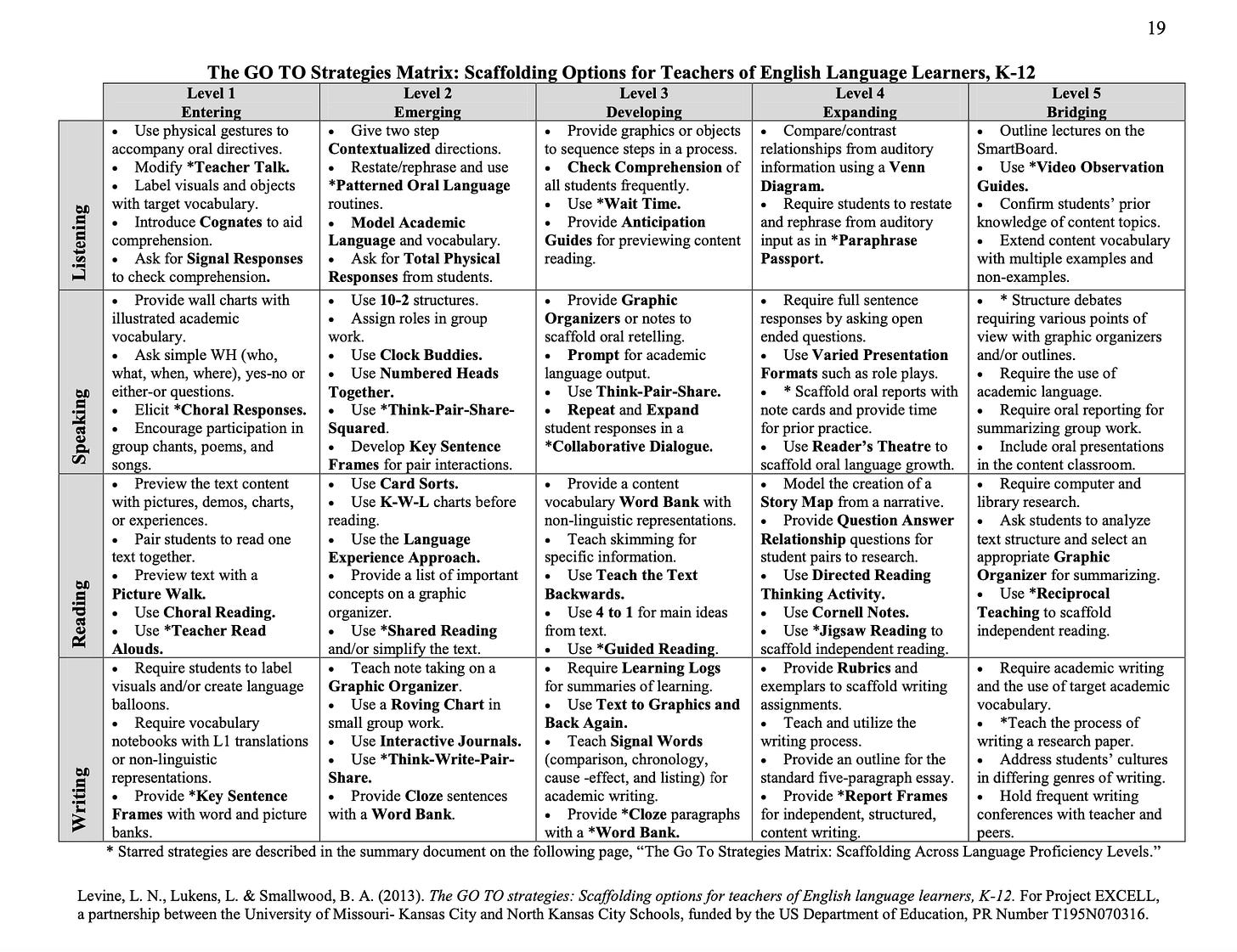Why Differentiation Matters for MLLs:
Navigating Policy Shifts and Classroom Strategies
Not all schools across the United States have the same proportion of Multilingual Learners (MLLs), and that’s why it’s so important to have consistent and effective supports in place for these students. Some states, like California, Texas, and Florida, have a high density of English Language Learners (ELLs) and more robust training requirements for teachers. However, this isn’t the case everywhere. Many states have fewer ELLs, and sometimes that means fewer resources and training for educators.
The Reality of MLL Populations Across States
As of the 2021–2022 school year, the states with the largest populations of MLLs in K-12 public schools include:1
California: Approximately 1.1 million ELL students, accounting for 18.9% of the state's total student population.
Texas: Approximately 1 million ELL students, representing 20.2% of the state's total student population.
Florida: Approximately 300,000 ELL students, making up around 10% of the state's total student enrollment.
These numbers show just how important it is to provide tailored educational support that meets the diverse linguistic and academic needs of our students. For more in-depth data, check out the article "The English-Learner Student Population, in Charts" by Ileana Najarro on EdWeekly.
Why State Requirements Vary
In states with large populations of MLLs, teachers are often expected to have specialized training. For example, in California, educators must have a CLAD (Crosscultural, Language, and Academic Development) certification to ensure they are equipped to scaffold instruction, promote academic language development, and bridge cultural gaps. Some states may offer similar certifications, but it’s not a given. Many states only require a basic ESL (English as a Second Language) or ELL endorsement, which might not offer the same depth of training.
Policy and Immigration: The Ever-Changing Landscape
Educational policies are constantly evolving, and shifts in immigration patterns often influence how schools approach ELL instruction. States like California, with high populations of immigrants and ELLs, tend to have more comprehensive support plans. But in states where the ELL population is smaller, educators might not receive the same level of training or resources, leading to inconsistent support for students.
The GO TO Strategies: A Practical Resource for All Educators
During a recent professional development session, a matrix from the GO TO Strategies toolkit was shared. Even as a credentialed educator in a state with a large MLL population, I found it to be a great reminder and an easy tool to reference when lesson planning. Developed through Project EXCELL, this resource offers practical instructional strategies to scaffold content and language input for ELLs. The strategies align with five key principles:
a. Focus on Academic Language and Vocabulary: Prioritize teaching the specific language needed for academic success.
b. Link Background Knowledge: Build connections between what students already know and new content.
c. Provide Comprehensible Input: Use visuals, modeling, and clear language to make content accessible.
d. Promote Student Interaction: Encourage structured opportunities for students to use language in meaningful ways.
e. Utilize Formative Assessment: Regularly assess understanding and adjust instruction as needed.
What I love about these strategies is that they’re not just for ELLs—they work for all students. They’re flexible and can be adapted to any teaching environment, whether you’re in a state with lots of resources for ELLs or you’re having to find your own.
Whether your district offers robust support for Multilingual Learners (MLLs) or you find yourself seeking out resources independently, differentiation is key. All educators play a vital role in helping ELLs thrive academically and socially. By integrating proven strategies like the GO TO Strategies, we can create inclusive learning environments that honor diversity and promote equity in education.
What strategies have worked for you in supporting ELLs in your classroom? I’d love to hear your thoughts below!
Sources:
Levine, L. N., Lukens, L., & Smallwood, B. A. (2010). The GO TO Strategies Matrix: Scaffolding Options for Teachers of English Language Learners, K-12. Project EXCELL.
Najarro, I. (2024, June). The English-Learner student population, in charts. EdWeek. https://www.edweek.org/teaching-learning/the-english-learner-student-population-in-charts/2024/06
*While ELL is still widely recognized, MLL is considered more current and reflects a more positive approach to supporting students with diverse language backgrounds.


